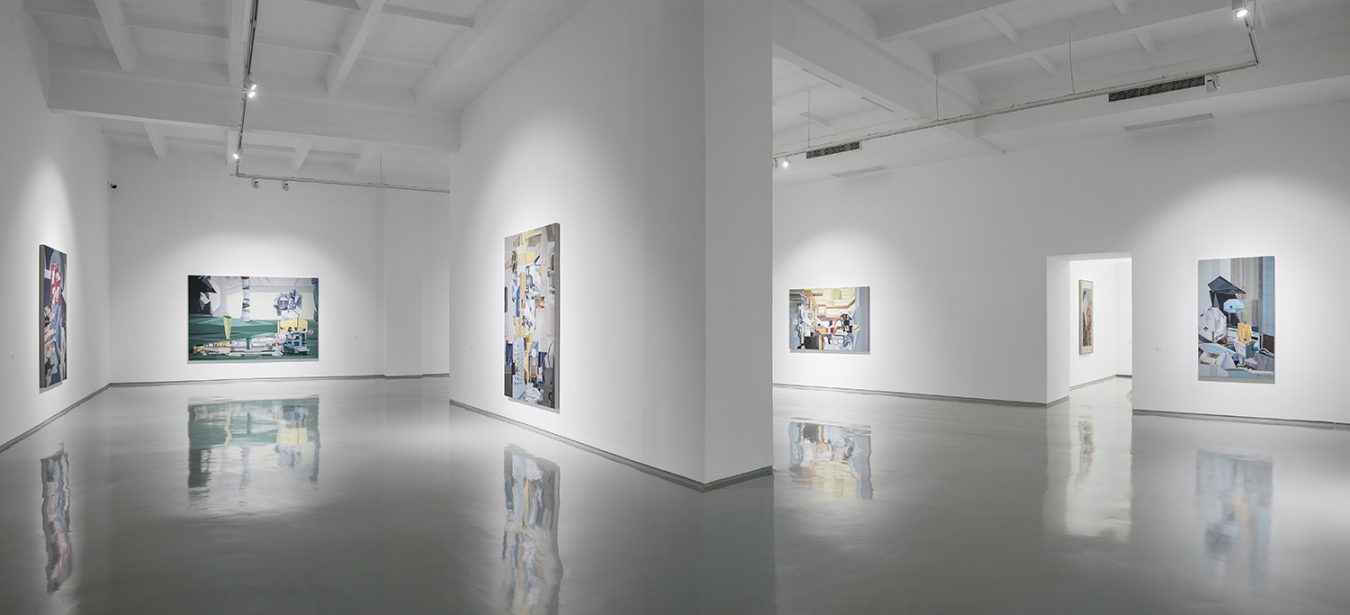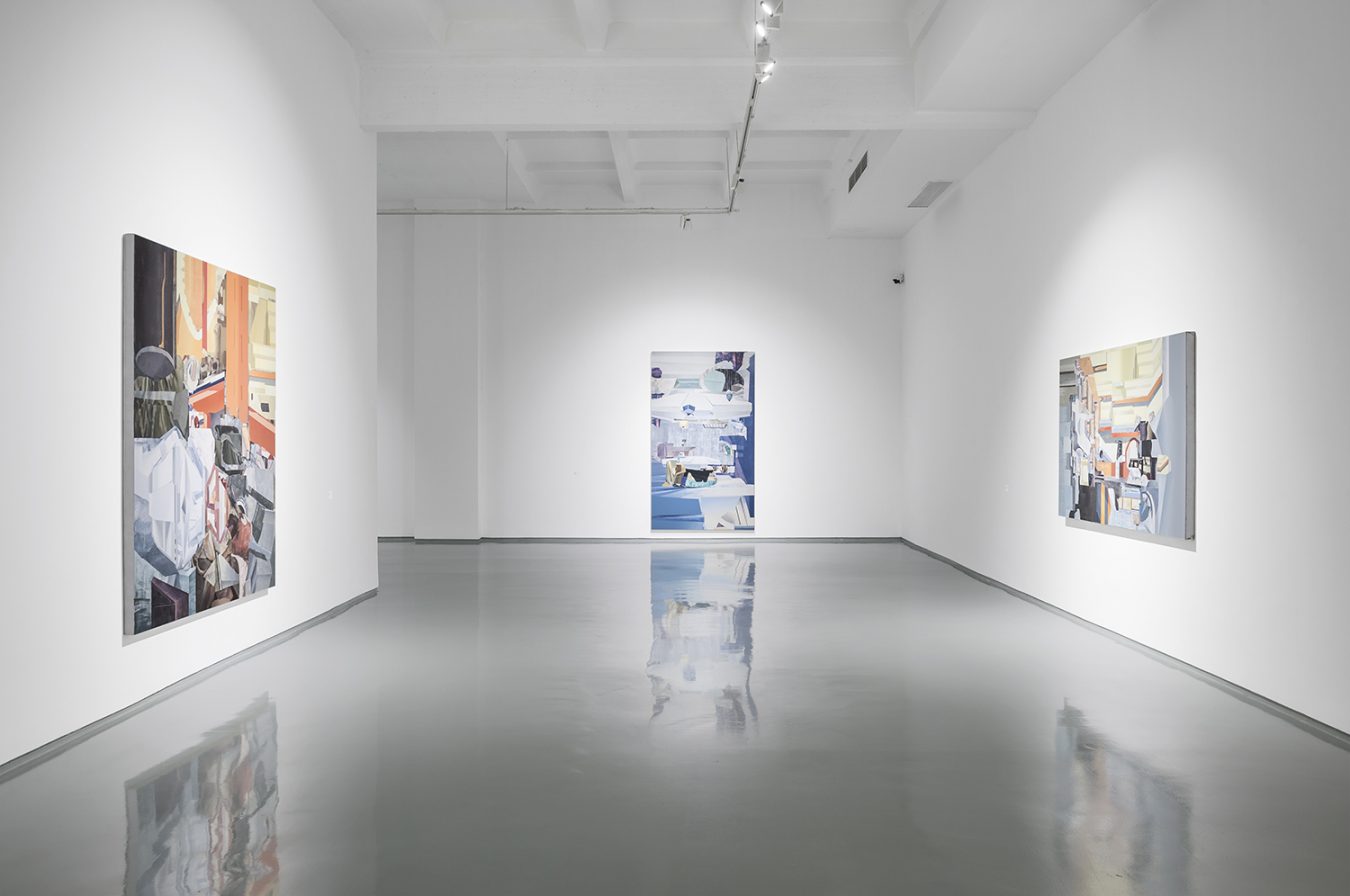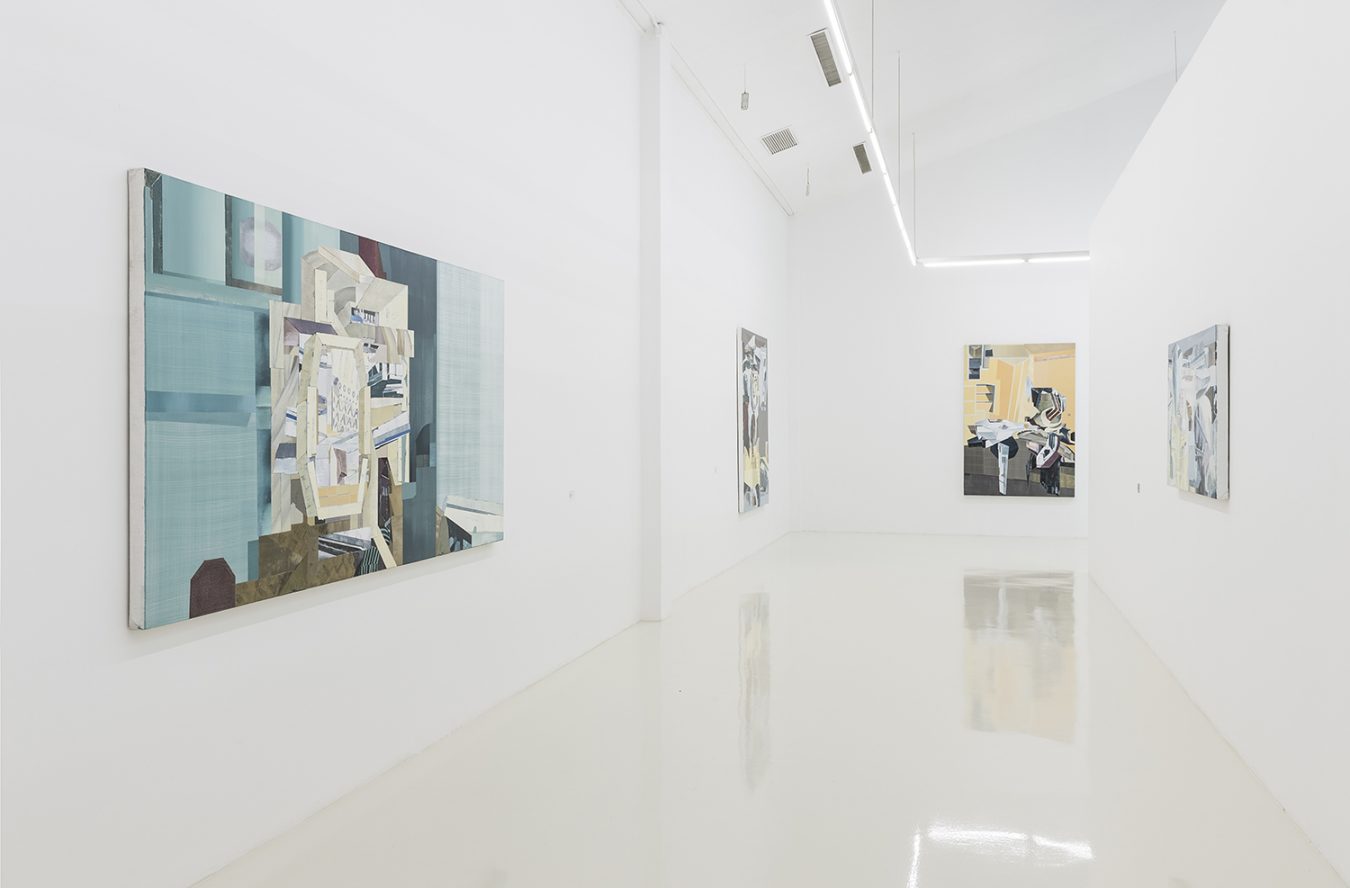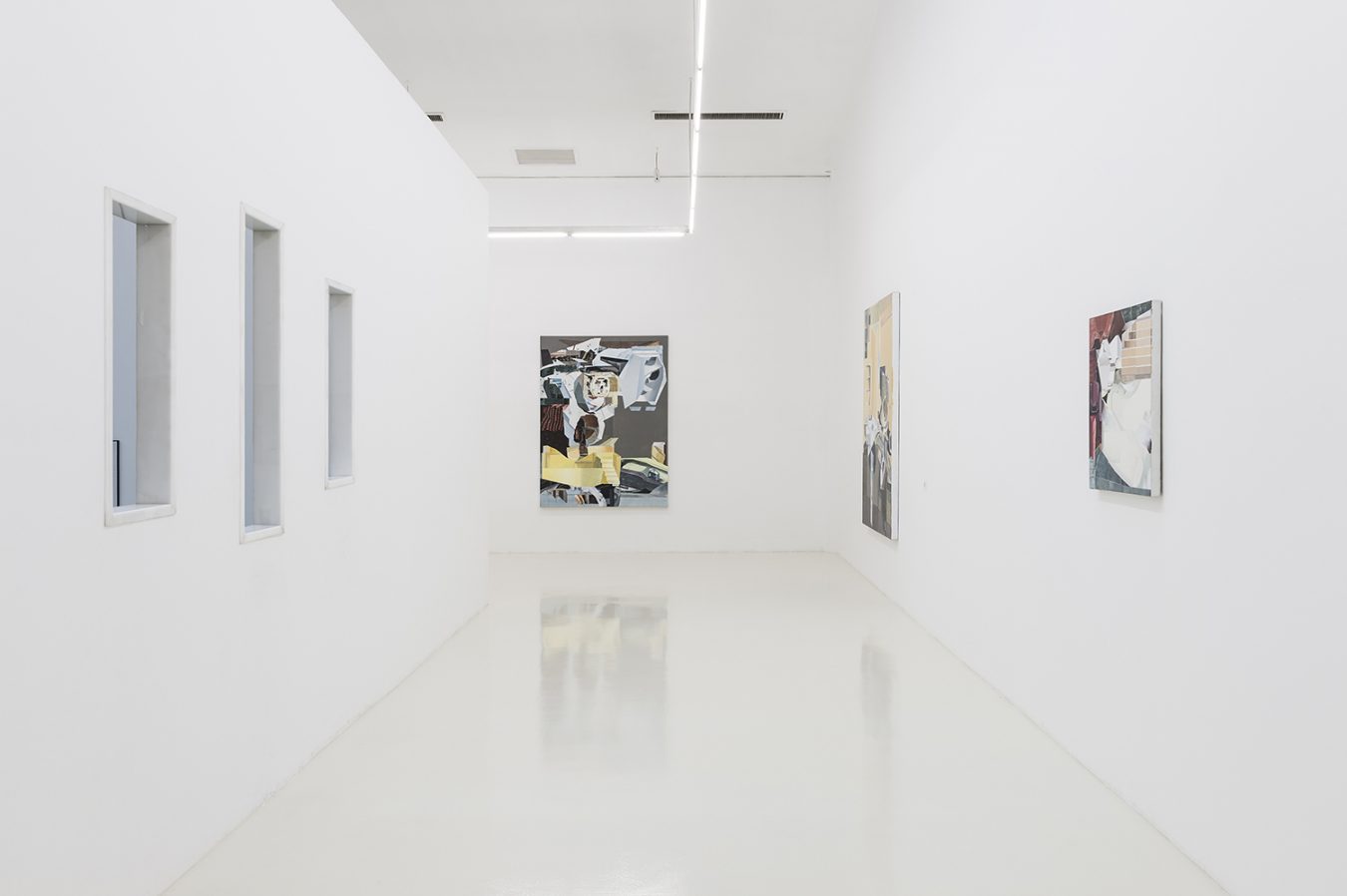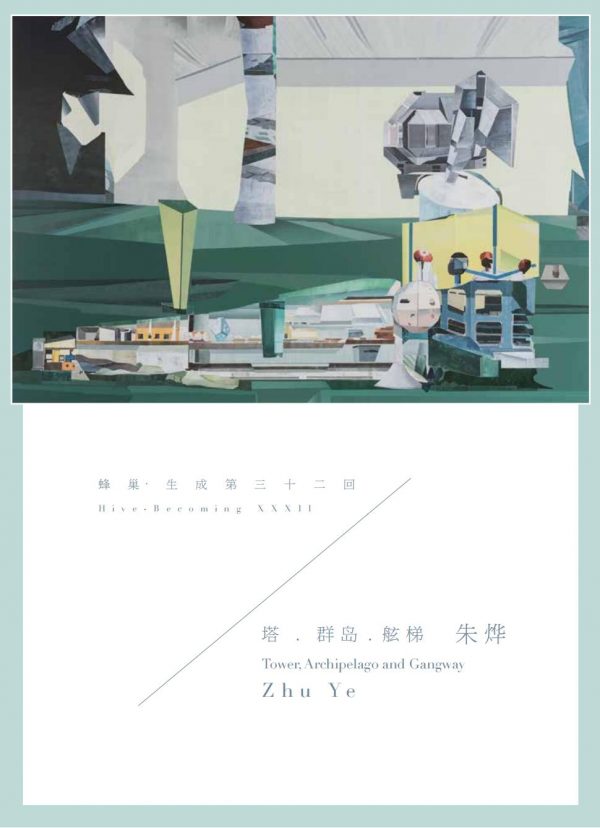Hive Center for Contemporary Art(Beijing) is honored to pronounce, Zhu Ye’s solo exhibition ‘Hive-Becoming XXXII Tower, Archipelago and Gangway’ will be presented at Exhibition Hall C, D and E from July 21st to August 25th 2018. This exhibition curated by Yang Jian, who is a young curator from Hive Center. This exhibition will present Zhu Ye’s artworks since 2016.
Zhu Ye was born in Taizhou, Zhejiang, in 1985. He graduated from the oil painting department of China Central Academy Of Fine Arts in 2008. At first glance, the audience probably will compare Zhu Ye’s paintings with Cubist paintings given the fact that both are equally eager to show in two-dimensional planes the elements perceived in the three-dimensional world, namely light-and-shadow, air, atmosphere and even time, etc., but they will detect that Zhu Ye has set his foot in the contemporary ground and implanted his personal interpretations of the information vehicles like time and space into his paintings. Seemingly he has predicted the possible trajectories contemporary audience would follow to perceive three-dimensional space, so he boldly simplifies and flattens Cubist visual layers, to exploit the audience’s associative ability to fill the omitted time and space. The flat but staggering visual effects look like graphical and twisting modules, and the modules perform the possibilities of composing the same image by altering angles on the plane. You must have assumed that what the artist depicted is something specific and real, yet you fail to evidence your assumption, so you admit it’s a non-figurative and realistic picture. Everyone who has led a modern life today can present two-dimensional images into three-dimensional models and make them visible in his own mind,and Zhu Ye’s bold presupposition about the audience is dependent on his keen observation and trust in modern visual experience.
Following the path of Modernism, I can’t help but associate his painting with the signature deconstructing approaches of Kazimir Severinovich Malevich, where he substituted abstract forms and lines for the weakened objects, or maybe what truly allows me to connect their arts is that they are both in the identically innovative times and that their arts both transform their idealism about the times into ritualized visuals. Yet, the difference is that Malevich’s is the pilgrim’s ultimate ideal and political ambition, while Zhu Ye’s questions, a mediation space set up for negotiation, a silent oblivion void of specific things, intermittent and indescribable pieces of information left behind, information projected to overload the symptoms of this era and a space for open discussion.
Zhu Ye emphasizes that his paintings serve nothing but the miniature eco-system created by himself. To understand how his paintings work as a point of the outlet it is absolutely necessary to look into his work habits. The artist has a planned-economy style work schedule with every specific preset time frame devoted to the completion of a certain segment of a dissected painting. If cut into pieces along the straight lines on the paintings, every fragment of painting would have its own date of production. Therefore a sort of archipelago-style structural relation exists among paintings and among fragments of a painting which, though apparently defined naturally or collectively as an entity, are loosely connected. They are in fact linked by mediums with relatively close connections, generating a relationship similar to what Martin Heidegger characterized as “Mitsein” (roughly equivalent to “coexistence” in English)—each and every island within an archipelago, while still plagued with loneliness, shares a common name.
